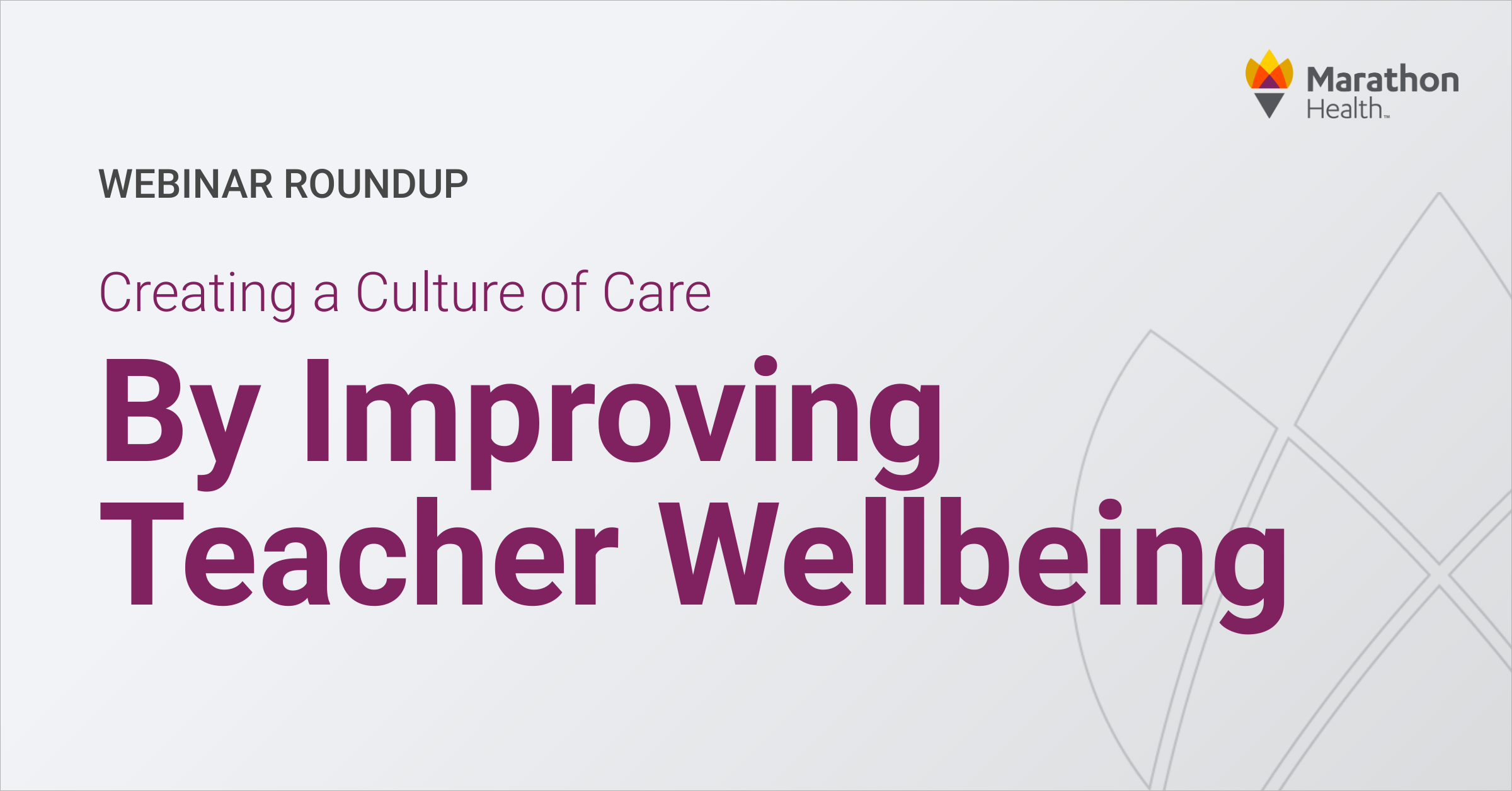The “calling” to teach has never been easy. But, on the heels of the pandemic, the challenges public school educators face are even more significant. Skyrocketing attrition rates and a historically declining number of candidates getting teaching degrees have been compounded by the physical and emotional toll taken on those who serve students. More than 4 out of every 10 teachers in K-12 settings report feeling burned out “always” or “very often” at work — the highest burnout rate of all U.S. professions — according to a 2022 Gallup poll.
During our webinar, Creating a Culture of Care by Improving Teacher Wellbeing, host Shelly Towns, Chief Marketing Officer for Marathon Health, spoke to our panel about how employer-sponsored healthcare is helping school districts better support their staff by providing better access to quality, advanced primary care.
The roundtable discussion includes great insights from:
Nancy Bolton, Director of Risk & Benefits Management for the School District of Palm Beach County, Florida
Shellie Hicks, Chief Human Resources Officer for Culver Academies in Culver, Indiana
Doug Sumner, Vice President of Education Affairs for Marathon Health
Kevin Windham, Director of Risk Management & Benefits for Escambia County Public Schools in Pensacola, Florida
Watch the Full Webinar — Creating a Culture of Care by Improving Teacher Wellbeing
Taking Better Care of School District Staff with High-Quality Healthcare
During the webinar, Doug shared how everything school districts “achieve or fail to achieve” comes down to the people. Taking care of school district staff results in taking care of the students. “If you want to put kids first, you have to put staff first,” Doug says.
Our poll results from webinar attendees revealed that the top three challenges school districts are facing are recruitment (26%), staff morale (24%), and health and wellbeing (18%). Rating the effectiveness of their wellbeing programs, almost one-third said excellent, 44% responded they were average, 16% below average and 12% admitted they don’t offer a formal wellbeing program.
In the state of Florida, Kevin says Escambia ranks 60th in poor health of the 67 counties, and it’s one of the reasons they offer employees access to a free or low-cost, high-quality health center. They also have been faced with recruitment issues. “We’ve expanded our recruitment opportunities and we leverage information at events and on our website about our school district’s health center,” he says. “It’s very important, not only for recruiting, but retaining our employees. Once they’re in the front door of the health center, patient satisfaction is off the charts. They’re raving fans.”
Shellie said their college preparatory boarding school brought on a health center 12 years ago. Today they see a 90% engagement rate with their staff. She says their strong participation is a result of a well-built incentive program where the staff can earn significantly reduced premiums for completing their biometrics screening and a health risk assessment, along with participating in wellness activities and getting preventive care. “We’re in a rural area, so access to PCPs or other health providers isn’t great,” Shellie says. “Having a clinic for our educators is convenient and really important for our wellbeing strategy.”
Nancy says their school district is newer to offering a health center, and while they’re still getting their footing, they are seeing success. “The employees who use it highly love it,” she says. “Our employees take a survey after they’ve been to the clinic, and the feedback… it’s just overwhelming. Ninety percent are surprised and delighted by the service. It’s one of the factors that wowed me.”
While a health center can help with recruitment, improve employee health and provide better access to care, the panel also discussed getting initial buy-in from your board. “When I worked at a school district, the board said, ‘Wait a minute, we already offer health insurance. People go to the doctor.’ And our response was, ‘But they’re not,’” Doug says. “The kids are most important, and the best thing you can do is surround them with happy, healthy, high-performing adults. The health center did just that. It was amazing to see board members who were a little skeptical in that first year see the data and a 98% satisfaction rate. The board fell in love with the benefit. And parents saw the success, too.”
Watch the full video to learn how to create a culture of care by improving teacher wellbeing.
Additional Content You Might Like
How to Make Employee Wellness Programs Successful
School District Improves Lives Through Employer-Funded Healthcare
How the Quadruple Aim Fuels Our Mission for Improving Employee Healthcare
You might also like
Subscribe to our newsletter and stay on the cutting edge of worksite healthcare.






